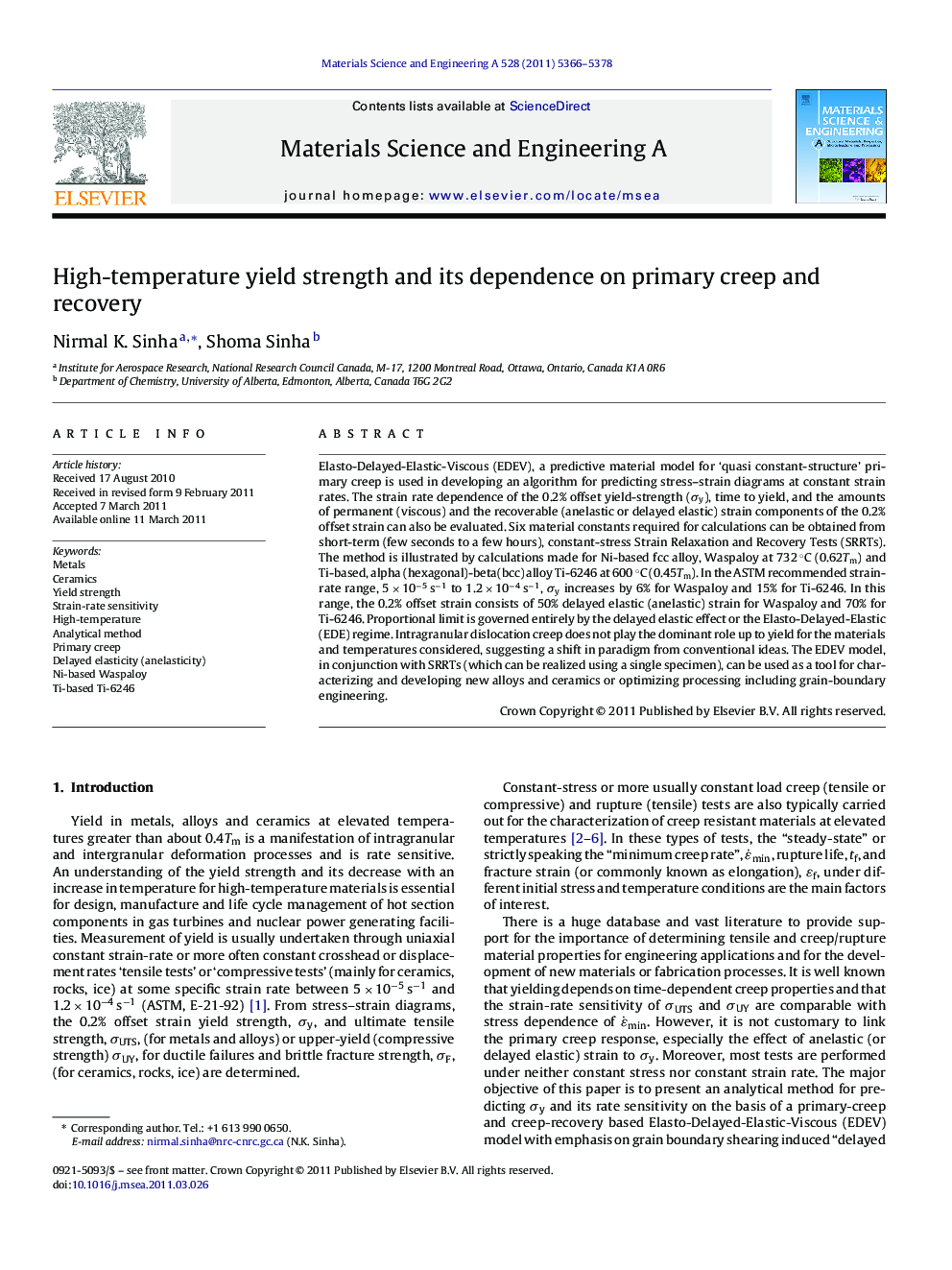| Article ID | Journal | Published Year | Pages | File Type |
|---|---|---|---|---|
| 1578547 | Materials Science and Engineering: A | 2011 | 13 Pages |
Elasto-Delayed-Elastic-Viscous (EDEV), a predictive material model for ‘quasi constant-structure’ primary creep is used in developing an algorithm for predicting stress–strain diagrams at constant strain rates. The strain rate dependence of the 0.2% offset yield-strength (σy), time to yield, and the amounts of permanent (viscous) and the recoverable (anelastic or delayed elastic) strain components of the 0.2% offset strain can also be evaluated. Six material constants required for calculations can be obtained from short-term (few seconds to a few hours), constant-stress Strain Relaxation and Recovery Tests (SRRTs). The method is illustrated by calculations made for Ni-based fcc alloy, Waspaloy at 732 °C (0.62Tm) and Ti-based, alpha (hexagonal)-beta(bcc) alloy Ti-6246 at 600 °C (0.45Tm). In the ASTM recommended strain-rate range, 5 × 10−5 s−1 to 1.2 × 10−4 s−1, σy increases by 6% for Waspaloy and 15% for Ti-6246. In this range, the 0.2% offset strain consists of 50% delayed elastic (anelastic) strain for Waspaloy and 70% for Ti-6246. Proportional limit is governed entirely by the delayed elastic effect or the Elasto-Delayed-Elastic (EDE) regime. Intragranular dislocation creep does not play the dominant role up to yield for the materials and temperatures considered, suggesting a shift in paradigm from conventional ideas. The EDEV model, in conjunction with SRRTs (which can be realized using a single specimen), can be used as a tool for characterizing and developing new alloys and ceramics or optimizing processing including grain-boundary engineering.
► High-temperature stress–strain diagrams are predicted based on early primary creep. ► Stress–time and strain–time curves for three components of strain are predictable. ► Required six material constants can be obtained from a single specimen. ► 0.2% yield strength depends on the strain rate even within the ASTM specifications. ► Recoverable delayed elastic strain contributes significantly to 0.2% offset strain.
